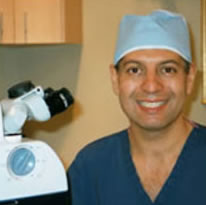Pediatric and Adult Strabismus

When patients visit corporate and discount laser centers they are typically attracted by a low price ad. Corporate laser centers are “sales driven” and once there, patients are often presented with any array of options as if they were buying a car. The options packages often include different quality lasers, doctors of varying experience and even the length and type of post operative care. The sales people at these corporate laser centers are often commissioned and will always try to “up sell” the patient to the more lucrative packages. Usually patients end up paying as much or more at these corporate laser centers as they do for Premium LASIK at The Eye Care Group.
 At The Eye Care Group our philosophy is simple – we are driven by quality patient care. We believe that everyone who has laser vision correction should have the best possible procedure available. Dr. Geffin, our experienced surgeon, provides personalized care before and after your procedure and is always available for any of his patient’s concerns. For all of his patients he only uses what is widely believed to be the world’s finest excimer laser, the Allegretto Wave®, by ALCON® WaveLight®. For Dr. Geffin and his dedicated staff, Premium LASIK and Personal Attention is the only way we know.
At The Eye Care Group our philosophy is simple – we are driven by quality patient care. We believe that everyone who has laser vision correction should have the best possible procedure available. Dr. Geffin, our experienced surgeon, provides personalized care before and after your procedure and is always available for any of his patient’s concerns. For all of his patients he only uses what is widely believed to be the world’s finest excimer laser, the Allegretto Wave®, by ALCON® WaveLight®. For Dr. Geffin and his dedicated staff, Premium LASIK and Personal Attention is the only way we know.
Dr. Geffin is a Board Certified ophthalmologist and fellowship trained in both corneal surgery and refractive surgery. This makes Dr. Geffin one of a few select eye surgeons who has received full fellowship training in surgery of the cornea, the external window of the eye, and refractive surgery, which corrects the eye’s ability to focus. Dr. Geffin’s special surgical skills include not only LASIK and PRK but also corneal transplants and cataract surgery.

During LASIK the surgeon first creates a thin corneal flap using a device called a microkeratome. The cornea flap is lifted up, and the laser beam is applied to the exposed interior surface of the cornea to reshape the tissue. The flap is then replaced over the treated area. This corneal flap serves as a natural bandage, which eliminates the discomfort associated with other types of refractive surgery, and expedites the healing process. Because of the extraordinary bonding properties of the corneal tissue, stitches are not needed to keep the flap in place after LASIK surgery.
